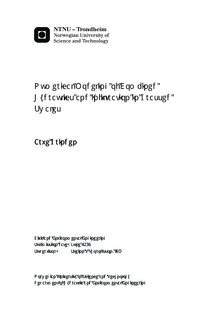Numerical Modeling of Combined Hydraulics and Infiltration in Grassed Swales
Master thesis
Permanent lenke
http://hdl.handle.net/11250/232860Utgivelsesdato
2014Metadata
Vis full innførselSamlinger
Sammendrag
The aim of this thesis is to establish a numerical model capable of simulating combined infiltration and hydraulic discharge through grassed swales. The model is intended for making assessments of the hydraulics within urban drainage on a more detailed level than methods currently available.An initial literature survey has been conducted, finding that research on the scientific field of hydraulics within sustainable urban drainage is scarce. The research available on drainage systems, such as grassed swales, is mainly focused on pollutant control through empirical research. An assessment is made that the need for detailed hydraulic investigations in order to fully understand swale runoff response is present, in order to fill this knowledge gap.On this basis a numerical model implementing an explicit discretization St. Venant´s equation for dynamic overland flow, combined with Green Ampt´s infiltration equation for sloping surfaces has been established. This makes the model capable of handling varying flow conditions on a short time scale, as will be the case in urban runoff events. The model has been established in the MATLAB programming language and allows for a wide range of user input of hydraulic and infiltration parameters. Simulations have been conducted on constructed data in order to assess the effect of variations in input parameters and the model simulation range. The combined model yields results consistent with what is expected from the governing equations, given typical swale design parameters. Instabilities were encountered for high slopes combined with low Manning coefficients, and for infiltration media consisting of fine grained soil types. Some simplifications needed to be made in order to combine the infiltration and hydraulic flow, amongst the most important the introduction of an artificial threshold depth. This is due to the models inability to run as the flow depth approaches zero, and a stable threshold depth is set to 0.005 m. The main reason behind this is a severe limitation in computational time step range, where the hydraulic equations require very small time steps and the infiltration equation requires large time steps. Given a suitable time step, the model produces consistently satisfactory simulation results.The model is expected to concur well with observed swale flow, given the needed calibration and verification. At the time of this thesis, suitable field data were not available such that model calibrations could not be conducted. If detailed modeling of depth approaching zero is needed, it should be considered implementing an implicit discretization in the hydraulic step.
